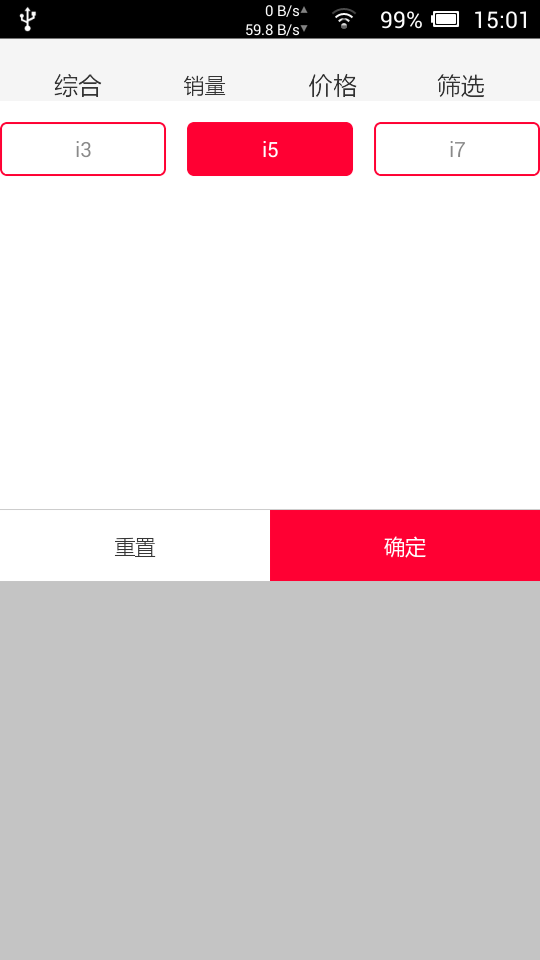編輯:關於Android編程
由於要做說明書,或者給客戶看效果圖,不得不通過截圖的方式把屏幕接下來(當然了,還可以通過拍照來達到目的)。於是就Google找到一些需要Root權限,和不需要Root權限的截圖應用,有些失望,多數不可用。於是就想自己開發一個截圖的應用。在View 中提供一個getDrawingCache的方法,可以通過次方法獲取View的截屏,但僅僅是截取View的。如果要截取狀態欄呢?
其實不然,在ICS中的SystemUI就實現了截圖的功能,按組合鍵Power+Volume Add/Volume sub就能截取圖片。代碼目錄:
frameworks/base/packages/SystemUI/src/com/android/systemui/screenshot/在此目錄下就兩個文件,主要的截圖方法在GlobalScreenshot中,本文就通過移植SystemUI中截圖的代碼實現截圖功能。
首先是直接移植SystemUI的代碼,實現截圖效果,這部分的代碼就不貼出來了,直接去下載代碼吧, 關鍵的代碼沒有幾句,最最主要的是:Surface.screenshot(),請看代碼吧。
[java]
<SPAN style="FONT-SIZE: 16px">package org.winplus.ss;
import java.io.File;
import java.io.FileNotFoundException;
import java.io.FileOutputStream;
import java.io.IOException;
import java.text.SimpleDateFormat;
import java.util.Date;
import android.app.Activity;
import android.content.Context;
import android.graphics.Bitmap;
import android.graphics.Canvas;
import android.graphics.Matrix;
import android.os.Bundle;
import android.util.DisplayMetrics;
import android.util.Log;
import android.view.Display;
import android.view.Surface;
import android.view.WindowManager;
import android.os.SystemProperties;
public class SimpleScreenshotActivity extends Activity {
private Display mDisplay;
private WindowManager mWindowManager;
private DisplayMetrics mDisplayMetrics;
private Bitmap mScreenBitmap;
private Matrix mDisplayMatrix;
@Override
public void onCreate(Bundle savedInstanceState) {
super.onCreate(savedInstanceState);
setContentView(R.layout.main);
new Thread(new Runnable() {
@Override
public void run() {
takeScreenshot();
}
}).start();
}
private float getDegreesForRotation(int value) {
switch (value) {
case Surface.ROTATION_90:
return 360f - 90f;
case Surface.ROTATION_180:
return 360f - 180f;
case Surface.ROTATION_270:
return 360f - 270f;
}
return 0f;
}
private void takeScreenshot() {
mWindowManager = (WindowManager) getSystemService(Context.WINDOW_SERVICE);
mDisplay = mWindowManager.getDefaultDisplay();
mDisplayMetrics = new DisplayMetrics();
mDisplay.getRealMetrics(mDisplayMetrics);
mDisplayMatrix = new Matrix();
float[] dims = { mDisplayMetrics.widthPixels,
mDisplayMetrics.heightPixels };
int value = mDisplay.getRotation();
String hwRotation = SystemProperties.get("ro.sf.hwrotation", "0");
if (hwRotation.equals("270") || hwRotation.equals("90")) {
value = (value + 3) % 4;
}
float degrees = getDegreesForRotation(value);
boolean requiresRotation = (degrees > 0);
if (requiresRotation) {
// Get the dimensions of the device in its native orientation
mDisplayMatrix.reset();
mDisplayMatrix.preRotate(-degrees);
mDisplayMatrix.mapPoints(dims);
dims[0] = Math.abs(dims[0]);
dims[1] = Math.abs(dims[1]);
}
mScreenBitmap = Surface.screenshot((int) dims[0], (int) dims[1]);
if (requiresRotation) {
// Rotate the screenshot to the current orientation
Bitmap ss = Bitmap.createBitmap(mDisplayMetrics.widthPixels,
mDisplayMetrics.heightPixels, Bitmap.Config.ARGB_8888);
Canvas c = new Canvas(ss);
c.translate(ss.getWidth() / 2, ss.getHeight() / 2);
c.rotate(degrees);
c.translate(-dims[0] / 2, -dims[1] / 2);
c.drawBitmap(mScreenBitmap, 0, 0, null);
c.setBitmap(null);
mScreenBitmap = ss;
}
// If we couldn't take the screenshot, notify the user
if (mScreenBitmap == null) {
return;
}
// Optimizations
mScreenBitmap.setHasAlpha(false);
mScreenBitmap.prepareToDraw();
try {
saveBitmap(mScreenBitmap);
} catch (IOException e) {
System.out.println(e.getMessage());
}
}
public void saveBitmap(Bitmap bitmap) throws IOException {
String imageDate = new SimpleDateFormat("yyyy-MM-dd-HH-mm-ss")
.format(new Date(System.currentTimeMillis()));
File file = new File("/mnt/sdcard/Pictures/"+imageDate+".png");
if(!file.exists()){
file.createNewFile();
}
FileOutputStream out;
try {
out = new FileOutputStream(file);
if (bitmap.compress(Bitmap.CompressFormat.PNG, 70, out)) {
out.flush();
out.close();
}
} catch (FileNotFoundException e) {
e.printStackTrace();
} catch (IOException e) {
e.printStackTrace();
}
}
}
</SPAN>
package org.winplus.ss;
import java.io.File;
import java.io.FileNotFoundException;
import java.io.FileOutputStream;
import java.io.IOException;
import java.text.SimpleDateFormat;
import java.util.Date;
import android.app.Activity;
import android.content.Context;
import android.graphics.Bitmap;
import android.graphics.Canvas;
import android.graphics.Matrix;
import android.os.Bundle;
import android.util.DisplayMetrics;
import android.util.Log;
import android.view.Display;
import android.view.Surface;
import android.view.WindowManager;
import android.os.SystemProperties;
public class SimpleScreenshotActivity extends Activity {
private Display mDisplay;
private WindowManager mWindowManager;
private DisplayMetrics mDisplayMetrics;
private Bitmap mScreenBitmap;
private Matrix mDisplayMatrix;
@Override
public void onCreate(Bundle savedInstanceState) {
super.onCreate(savedInstanceState);
setContentView(R.layout.main);
new Thread(new Runnable() {
@Override
public void run() {
takeScreenshot();
}
}).start();
}
private float getDegreesForRotation(int value) {
switch (value) {
case Surface.ROTATION_90:
return 360f - 90f;
case Surface.ROTATION_180:
return 360f - 180f;
case Surface.ROTATION_270:
return 360f - 270f;
}
return 0f;
}
private void takeScreenshot() {
mWindowManager = (WindowManager) getSystemService(Context.WINDOW_SERVICE);
mDisplay = mWindowManager.getDefaultDisplay();
mDisplayMetrics = new DisplayMetrics();
mDisplay.getRealMetrics(mDisplayMetrics);
mDisplayMatrix = new Matrix();
float[] dims = { mDisplayMetrics.widthPixels,
mDisplayMetrics.heightPixels };
int value = mDisplay.getRotation();
String hwRotation = SystemProperties.get("ro.sf.hwrotation", "0");
if (hwRotation.equals("270") || hwRotation.equals("90")) {
value = (value + 3) % 4;
}
float degrees = getDegreesForRotation(value);
boolean requiresRotation = (degrees > 0);
if (requiresRotation) {
// Get the dimensions of the device in its native orientation
mDisplayMatrix.reset();
mDisplayMatrix.preRotate(-degrees);
mDisplayMatrix.mapPoints(dims);
dims[0] = Math.abs(dims[0]);
dims[1] = Math.abs(dims[1]);
}
mScreenBitmap = Surface.screenshot((int) dims[0], (int) dims[1]);
if (requiresRotation) {
// Rotate the screenshot to the current orientation
Bitmap ss = Bitmap.createBitmap(mDisplayMetrics.widthPixels,
mDisplayMetrics.heightPixels, Bitmap.Config.ARGB_8888);
Canvas c = new Canvas(ss);
c.translate(ss.getWidth() / 2, ss.getHeight() / 2);
c.rotate(degrees);
c.translate(-dims[0] / 2, -dims[1] / 2);
c.drawBitmap(mScreenBitmap, 0, 0, null);
c.setBitmap(null);
mScreenBitmap = ss;
}
// If we couldn't take the screenshot, notify the user
if (mScreenBitmap == null) {
return;
}
// Optimizations
mScreenBitmap.setHasAlpha(false);
mScreenBitmap.prepareToDraw();
try {
saveBitmap(mScreenBitmap);
} catch (IOException e) {
System.out.println(e.getMessage());
}
}
public void saveBitmap(Bitmap bitmap) throws IOException {
String imageDate = new SimpleDateFormat("yyyy-MM-dd-HH-mm-ss")
.format(new Date(System.currentTimeMillis()));
File file = new File("/mnt/sdcard/Pictures/"+imageDate+".png");
if(!file.exists()){
file.createNewFile();
}
FileOutputStream out;
try {
out = new FileOutputStream(file);
if (bitmap.compress(Bitmap.CompressFormat.PNG, 70, out)) {
out.flush();
out.close();
}
} catch (FileNotFoundException e) {
e.printStackTrace();
} catch (IOException e) {
e.printStackTrace();
}
}
}
PS:1、需要在AndroidManifest.xml中加入代碼:android:sharedUserId="android.uid.system"
2、由於調用了@hide的API,所以編譯得時候請使用makefile編譯。或者通過在Eclipse中添加Jar文件通過編譯。
3、此代碼只在Android4.0中使用過,2.3的就沒去做測試了。
作者:tangcheng_ok
 Android如何防止apk程序被反編譯(尊重勞動成果)
Android如何防止apk程序被反編譯(尊重勞動成果)
作為Android應用開發者,不得不面對一個尴尬的局面,就是自己辛辛苦苦開發的應用可以被別人很輕易的就反編譯出來。Google似乎也發現了這個問題,從SDK2.3開始我們
 AndroidAnnnotations注入框架使用之第三方框架集成RoboGuice(十三)
AndroidAnnnotations注入框架使用之第三方框架集成RoboGuice(十三)
(一).前言:前面我們已經對於AndroidAnnotations框架的線程處理做了講解,今天我們開始具體學習一下第三方框架集成。 (二
 View 滑動的實現
View 滑動的實現
復習一下view滑動的幾種實現方式1.通過layout實現通過不斷重新layout view 達到滑動的效果。 @Override public boolea
 Android 仿2016版京東篩選
Android 仿2016版京東篩選
京東篩選更新了,很好,很炫酷。那什麼,我們也不差是吧,於是就有了這個demo。話不多說,先看圖,不想看代碼的朋友,直接點底部下demo。 圖1裡面呢,就兩點,彈出的Po